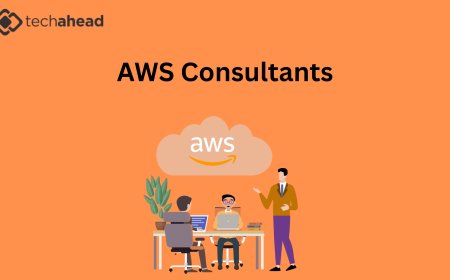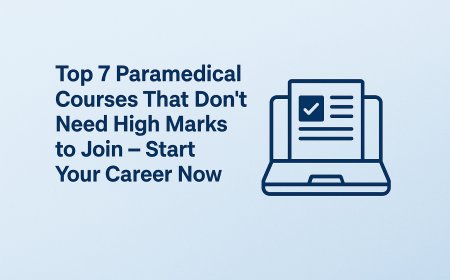What You Need to Know Before Starting a Video Editing Career
Want to begin a career in video editing? Learn the skills, tools, challenges, and career paths you should know before stepping into this creative industry.

Introduction
In the digital age, where visual content dominates every platform, video editing has emerged as one of the most in-demand and creative career paths. From YouTube content and advertisements to films, corporate videos, and online courses editors play a crucial role in shaping the final product. But before you dive into this exciting industry, it's essential to understand what a career in video editing involves, what skills and tools you need, and what challenges to expect. Here's a detailed guide on what you need to know before starting a video editing career.
1. Understand the Role of a Video Editor
Video editing is more than cutting and merging clips. A professional video editor:
-
Tells a story through visuals
-
Enhances audio and visual quality
-
Ads transitions, effects, and titles
-
Works closely with directors or clients
-
Manages time-sensitive deadlines
If you enjoy creative storytelling, attention to detail, and working with digital tools, this career could be a great fit.
2. Learn the Basic and Advanced Editing Tools
To become a successful video editor, you need to be comfortable with industry-standard software. Popular tools include:
-
Adobe Premiere Pro Professional-grade editing for various formats
-
Final Cut Pro (Mac users) Preferred in film and TV editing
-
DaVinci Resolve Known for color correction and professional finish
-
Filmora or iMovie Beginner-friendly options
As you grow, you may also need to learn:
-
Adobe After Effects (for motion graphics)
-
Adobe Audition (for audio editing)
-
Photoshop (for graphic elements)
Tip: Start with free trials or student licenses to explore which tool suits you best.
3. Develop a Strong Understanding of Storytelling
Great video editors are great storytellers. You must understand how to:
-
Build tension and emotion
-
Maintain pacing and rhythm
-
Use music, voiceovers, and silence effectively
-
Transition between scenes smoothly
Even if the visuals are top-notch, poor storytelling can ruin the entire viewing experience.
4. Practice With Real Projects
Theory is good, but hands-on experience is critical. Practice by:
-
Editing YouTube videos or short films
-
Creating highlight reels for friends or events
-
Collaborating on student or indie projects
-
Volunteering for social media pages or NGOs
This not only helps you improve but also builds a portfolio to showcase your skills to future clients or employers.
5. Build an Impressive Portfolio
A strong portfolio is your best marketing tool. Include:
-
35 of your best projects (not necessarily the longest)
-
A variety of styles (documentary, corporate, social media, music videos)
-
Before/after clips to show your impact
-
Client testimonials if possible
-
Consider uploading your work on YouTube, Behance, or your own website.
6. Know the Career Paths and Opportunities
Video editing offers many directions. You can work as:
-
Freelancer Flexible and often remote
-
In-house editor For agencies, studios, or media houses
-
Content creator Editing your own videos for YouTube or Instagram
-
Depending on your interest and niche, you can choose a path that fits your lifestyle and ambition.
7. Stay Updated With Industry Trends
The video editing world evolves rapidly. Stay current by:
-
Exploring new tools, plug-ins, and editing styles
-
Taking online courses or attending webinars (Udemy, Coursera, Skillshare, etc.)
-
Learning never stops in this career the more you evolve, the better you get.
8. Understand the Soft Skills Required
Along with technical know-how, editors need:
Time management: Most projects come with tight deadlines
Communication:To interpret client needs and give feedback
Creativity:To deliver unique and visually compelling videos
Patience: Rendering, exporting, and revising can be time-consuming
These soft skills often make the difference between a good and a great editor.
9. Invest in the Right Equipment
While you can start with basic hardware, investing in a decent setup boosts efficiency. Consider:
-
A fast processor and sufficient RAM (16GB or more)
-
A good graphics card (for rendering and effects)
-
Dual monitors (optional but helpful)
-
Quality headphones and external storage drives
Tip: Back up your work regularly nothing hurts more than losing hours of progress.
10. Know the Challenges and Realities
Before starting your video editing journey, be prepared for:
-
Long hours and last-minute changes
-
Creative blocks and demanding clients
-
Learning curves for different tools and techniques
-
Occasional burnout editing requires focus and stamina
The work is rewarding, but its important to set boundaries and manage your time well.
Conclusion
A career in video editing is creative, flexible, and increasingly in demand. With the rise of digital content, skilled editors are essential to every brand, business, and platform. But success doesnt happen overnight. Youll need to learn the tools, develop your storytelling, and practice consistently. Whether you dream of editing feature films, viral videos, or brand reels, the journey starts with knowing what lies ahead and preparing yourself accordingly.































